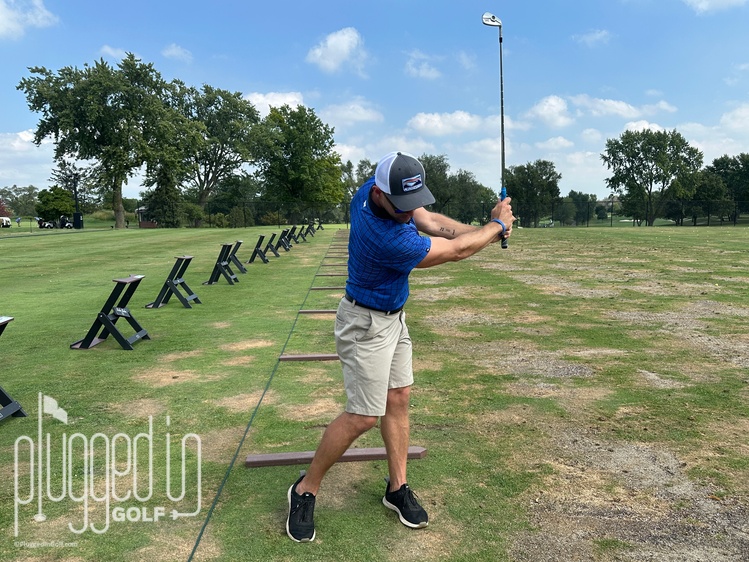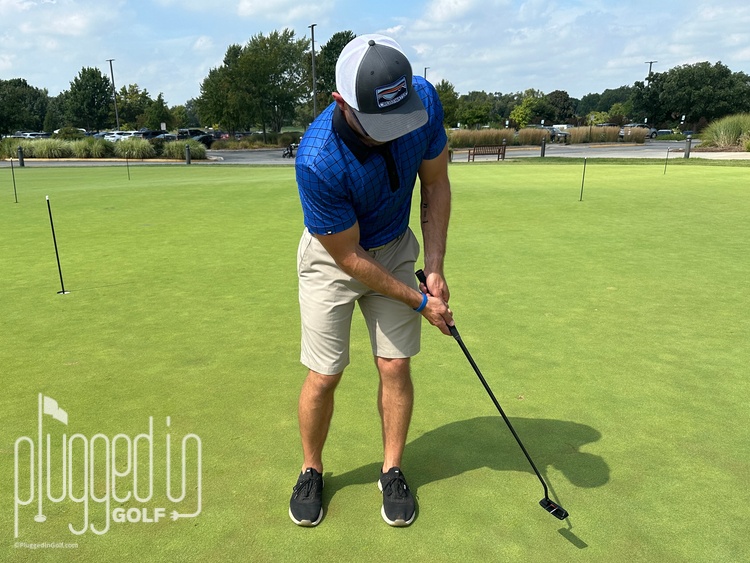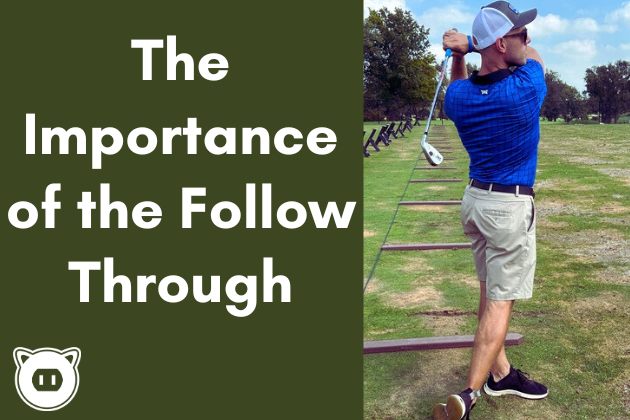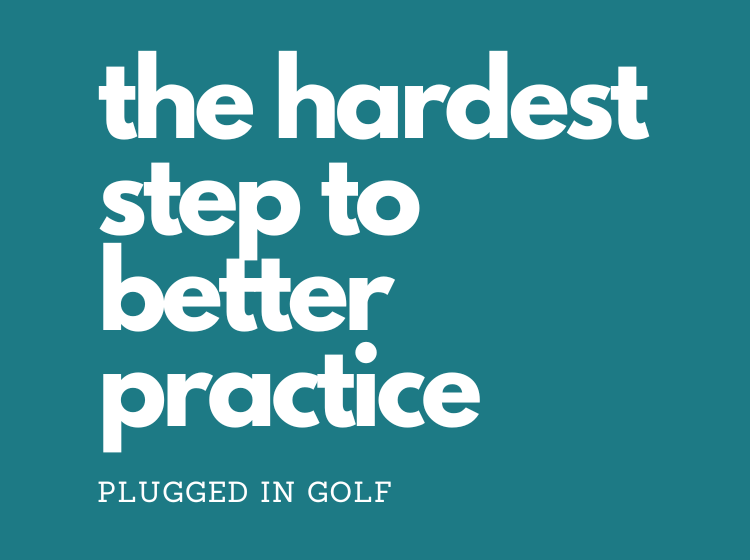Simple Works
As a young coach – in both golf and basketball – I was preoccupied with making sure my students knew how much I knew. I filled all the available air space with jargon and instruction, convinced that each student’s improvement was directly tied to how many words I said to them.
Now, whether I’m teaching a fourth grader how to shoot a basketball or a fifty year old how to stop slicing, I frequently pare my teaching down to this: hold your follow through. In this lesson, I’ll explain why this simple idea has so much power.
This Lesson Is For You If:
You want to improve your swing
You have too many swing thoughts
You want to learn about your swing flaws

The Many Virtues of Holding Your Follow Through
One of the primary virtues of “hold your follow through” is its simplicity. Every player – from the seasoned, scratch golfer to the complete beginner – understands what it means. We’ve all seen the PGA Tour logo. Try to look like that when you’re done. Simple.
Relatedly, this straightforward edict acts as an eraser for the litany of swing thoughts many golfers carry around. If you’re thinking about holding your follow through, you can’t be worried about your wrist flexion at P2.5.

By erasing swing thoughts, this phrase also relieves a lot of psychological pressure. All those swing thoughts build up a mountain of expectations: “I need to flex my wrist at the top of the swing so that I can square the face at impact. If I don’t, I’m going to slice it and look like a hack, oh no oh no oh no.” It’s no wonder some players get stuck over the ball. When I ask them to hold the follow through, I’m taking on all the responsibility for the outcome. If they hold their follow through, they did their job. Easy.
One more benefit is that “hold your follow through” is an external cue. Research on motor learning shows that, across sports, people make changes faster with external cues than internal cues [learn more HERE]. External cues allow the golfer to be an athlete and accomplish the goal without micromanagement.
When I ask a player to hold their follow through, a myriad of good things tend to happen. They usually finish on balance with a proper weight shift into their lead foot and a full turn toward the target. Typically, they finish the swing with their club over their lead shoulder. And, often, they do a better job of “releasing” the club face and getting it square at impact. Pretty good for a “simple” four-word lesson.

Succeed or Learn
One of my favorite things about holding the follow through is that it gives the player feedback that’s easily understood. All of those benefits I listed a moment ago – weight shift, full turn, balance, “completed” arm swing – come with a clear indicator in the follow through.
If the student finishes the swing standing on their trail leg, we both know they didn’t shift their weight. If their chest isn’t pointed to the target, they didn’t turn. If the club isn’t over their shoulder, they may have made a tentative arm swing. All of this feedback turns into a straightforward cue for the next swing.
This is in stark contrast to most internal cues which require video confirmation. Needing video not only delays the feedback (a killer to learning), it makes the feedback harder/impossible to get when the student is on their own. For more on why I hate filming golf swings, click HERE.

A Cue for Your Entire Game
Finally, while the idea of holding your follow through definitely has the most dramatic impact on the full swing, it’s an idea that you can use in every part of your game. Personally, I find it most helpful in the short game. I tend to get “stabby” with my chips and pitches, not shifting forward and completing the swing. Holding that unpleasant, incomplete follow through is a harsh prompt to do better.
On the green, we’re not making dramatic turns or weight shifts, but there are still lessons to learn. If you’re trying to make a flowing, smooth stroke, you’ll want to see that follow through get the putter head well past the address position rather than stopping at impact. We can also watch the club face and feel the pressure in our feet for clues about why our putts are starting offline.
“Hold your follow through” isn’t going to make you sound like a PhD of Golf Swing Jargon, but it might be the fastest route to better results.
He founded Plugged In Golf in 2013 with the goal of helping all golfers play better and enjoy the game more.
Matt lives in the northwest suburbs of Chicago with his wife and two daughters.
- Performance Golf Click Stick Training Aid Review - October 18, 2024
- Callaway Opus Platinum Wedge Review - October 17, 2024
- When to Take a Break from Golf - October 15, 2024















2 Comments
Simple is good in this game that we want to make impossibly complicated.
Thanks for this insight Matt. I find myself sometimes bogged down in swing thoughts. Can’t wait to simplify things with this new mantra of ‘holding your follow through.’ Also have a friend that always finishes his swing with a reverse weight shift, arms not extended, and hooks the ball (many times out of play) because of it. Hope this will help him too.